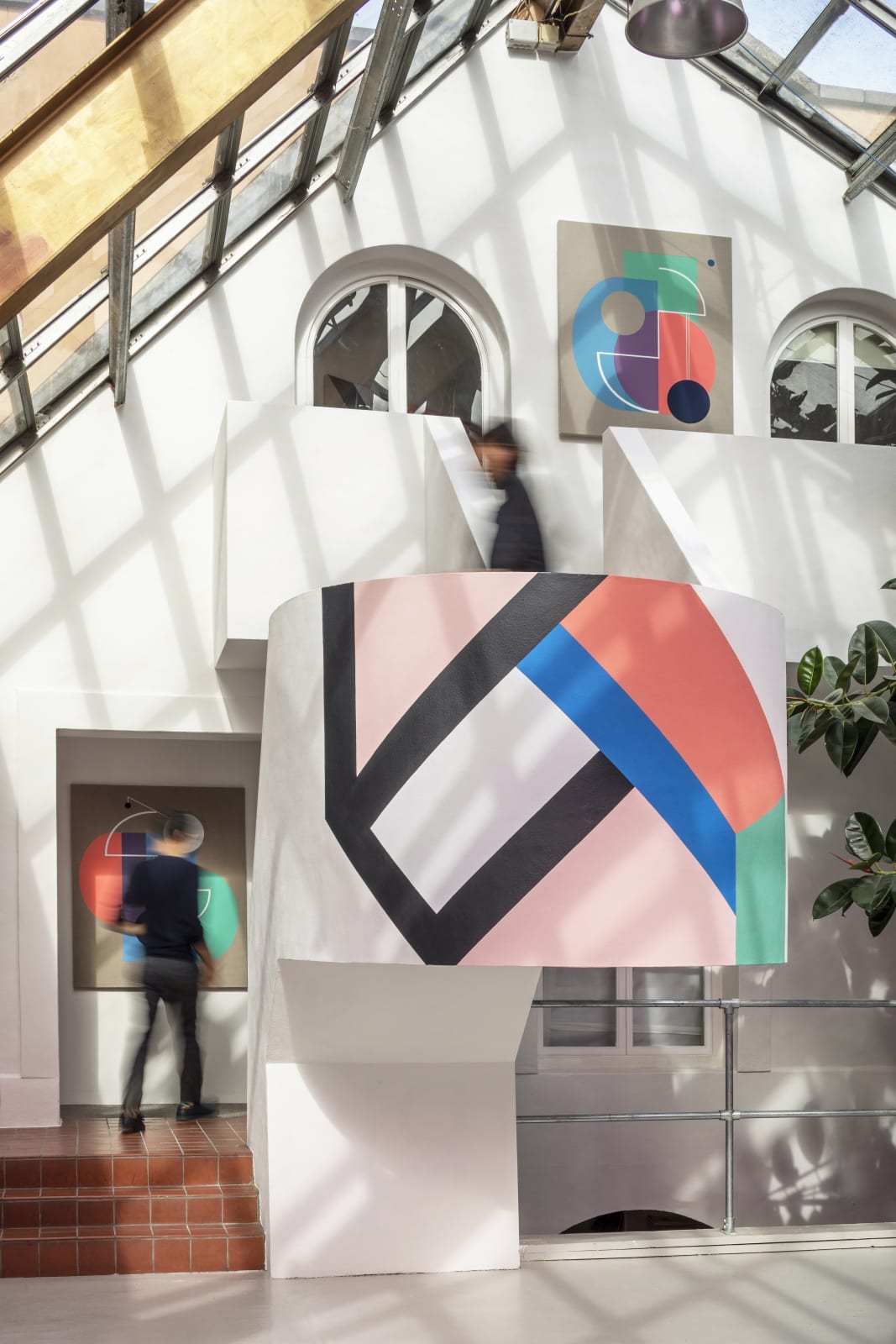Modern Times, Mural , 2020
Within the gallery at Kristin Hjellegjerde, Tantra has tapped into its previous histories as an industrial factory, an artist studio, a mid-century modernist home, to create a site-specific installation. The installation is paradoxically pre-modern and postmodern, suggestive of a tropical jungle and civilisation before Westernisation and uninhabited by humanity. In her words:
"I wanted to cut through the vast architectural volume of the space and somehow inject the spirit of escapism or stepping into another world—part nostalgic, part historical, real and imagined."
This is particularly brought out by the modernist staircase at the centre of the gallery, which Tantra finds reminiscent of the Penguin Pool at London Zoo, designed by Berthold Lubetkin in 1934, as well as the Isokon Flats in Hampstead, North London, designed by Wells Coates between 1929 and 1932 and opened in 1934. The Isokon Flats were inhabited and visited by world-class artists, architects, writers, and theorists including Walter Gropius, Marcel Breuer, Laslo Moholy-Nagy, Naum Gabo, Piet Mondrian, Henry Moore, Barbara Hepworth, and Ben Nicholson. The building fell into disuse in the 1970s and 1990s until being rescued and refurbished as a gallery and flats in 2003. In this way, the staircase becomes a symbol for the hopes and dreams of modernity while pointing to its inadequacies as a realistic form of living.
Within the gallery at Kristin Hjellegjerde, Tantra has tapped into its previous histories as an industrial factory, an artist studio, a mid-century modernist home, to create a site-specific installation. The installation is paradoxically pre-modern and postmodern, suggestive of a tropical jungle and civilisation before Westernisation and uninhabited by humanity. In her words:
"I wanted to cut through the vast architectural volume of the space and somehow inject the spirit of escapism or stepping into another world—part nostalgic, part historical, real and imagined."
This is particularly brought out by the modernist staircase at the centre of the gallery, which Tantra finds reminiscent of the Penguin Pool at London Zoo, designed by Berthold Lubetkin in 1934, as well as the Isokon Flats in Hampstead, North London, designed by Wells Coates between 1929 and 1932 and opened in 1934. The Isokon Flats were inhabited and visited by world-class artists, architects, writers, and theorists including Walter Gropius, Marcel Breuer, Laslo Moholy-Nagy, Naum Gabo, Piet Mondrian, Henry Moore, Barbara Hepworth, and Ben Nicholson. The building fell into disuse in the 1970s and 1990s until being rescued and refurbished as a gallery and flats in 2003. In this way, the staircase becomes a symbol for the hopes and dreams of modernity while pointing to its inadequacies as a realistic form of living.



